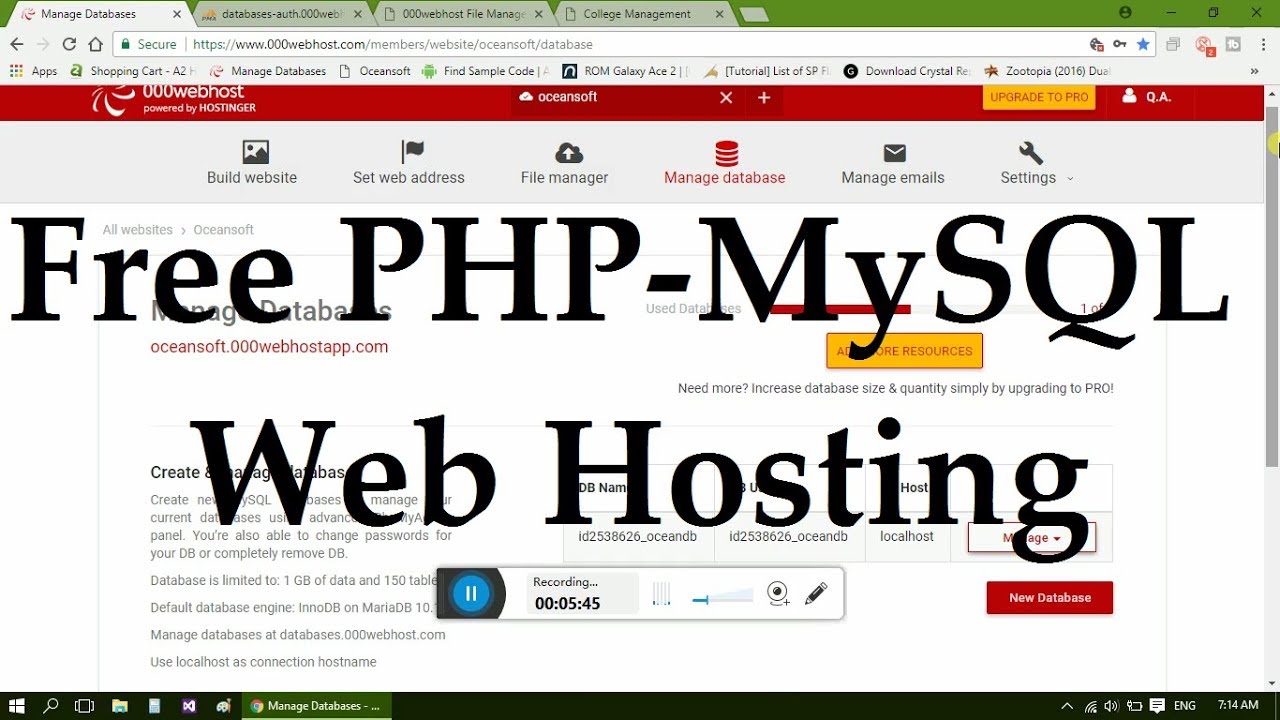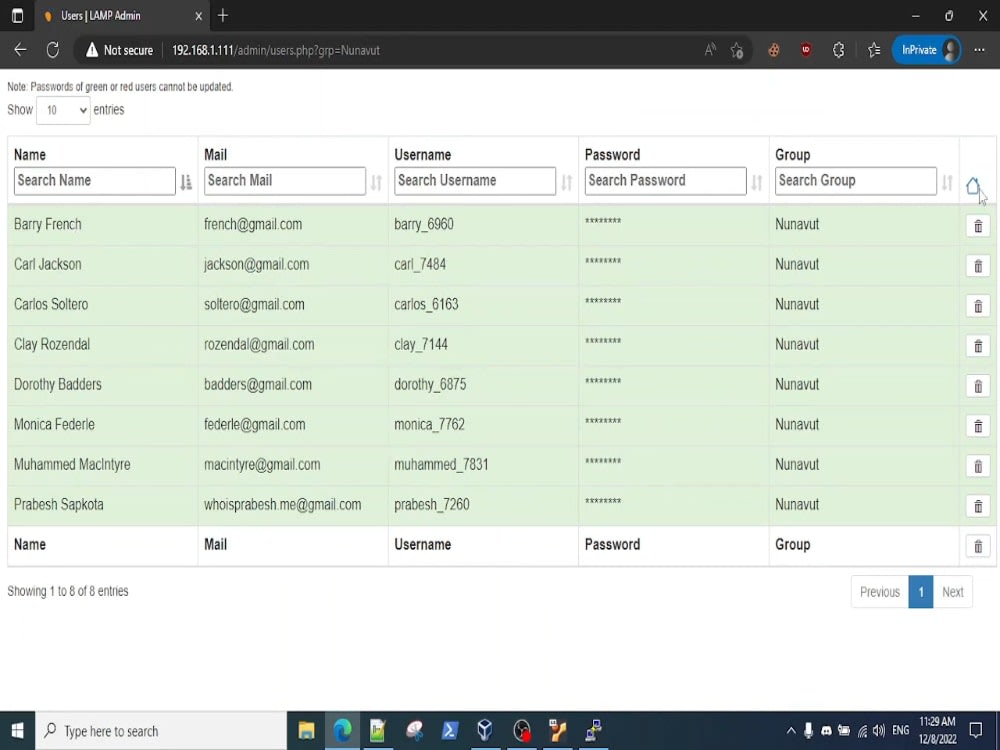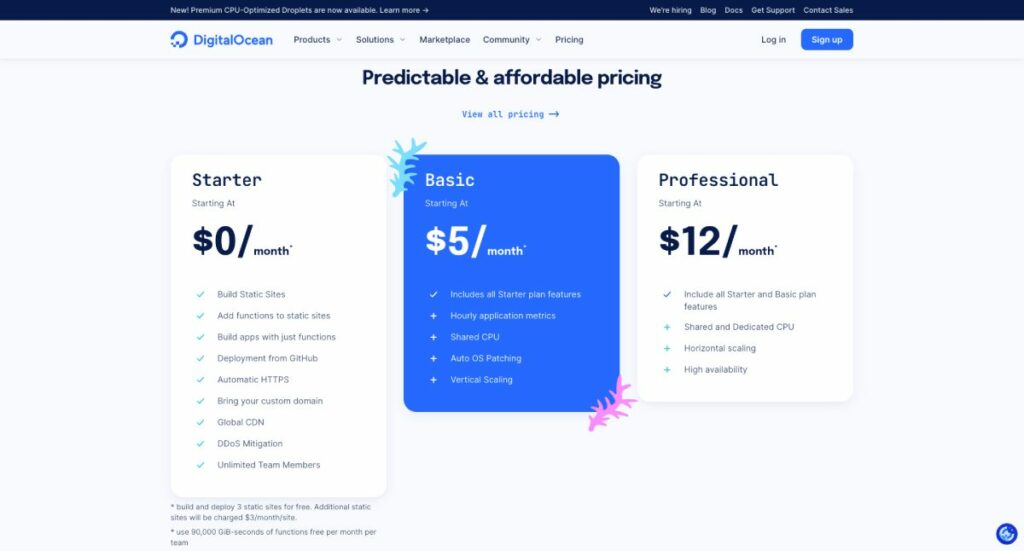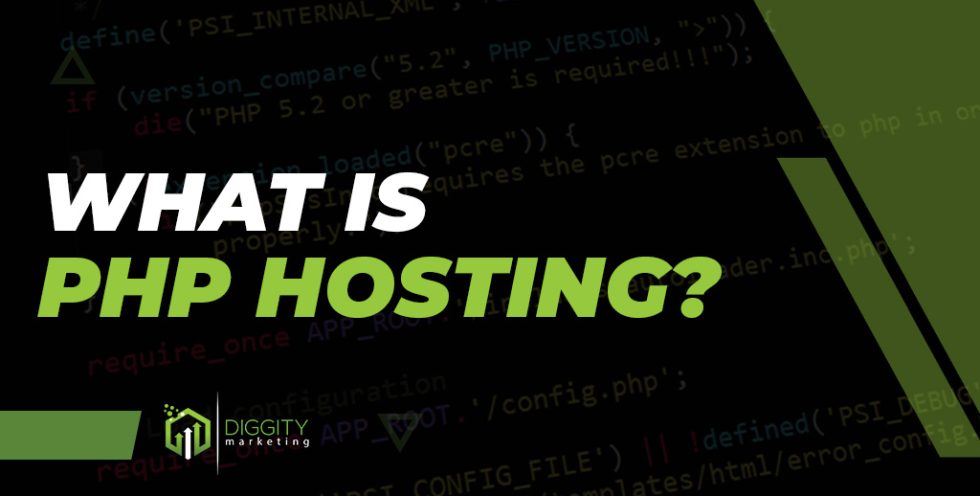Self hosted website – Self-hosted websites offer a level of control and customization that traditional web hosting services often lack. By hosting your website on your own server, you gain complete autonomy over its functionality, design, and content. This empowers you to tailor your online presence to your specific needs, whether you’re a business owner, an individual with a passion project, or a developer seeking a robust platform for your creations.
The journey of self-hosting begins with choosing the right platform, whether it’s a Linux, Windows, or macOS environment. Each platform comes with its own set of features, advantages, and disadvantages, and the best choice ultimately depends on your technical expertise and project requirements. Once you’ve selected your platform, you’ll embark on the exciting process of setting up your website, installing necessary software, and configuring your server to ensure optimal performance and security.
What is a self-hosted website?

A self-hosted website is a website that you own and control completely. You are responsible for all aspects of its operation, including the server, software, and content. This differs from using a web hosting service, where the service provider manages the infrastructure and you focus primarily on the website content.
Self-hosting vs. Web Hosting Services
Self-hosting and using a web hosting service represent distinct approaches to managing a website. Understanding the differences helps you choose the method that best suits your needs.
- Self-hosting involves acquiring and managing your own server. You have complete control over the server’s configuration, software, and security, allowing for maximum flexibility and customization. However, it requires technical expertise and ongoing maintenance.
- Web hosting services offer a pre-configured platform for hosting your website. You don’t need to manage the server, but you may have limited control over its configuration and security. These services typically provide a user-friendly interface and support, making website setup and management easier.
Advantages of Self-hosting
Self-hosting offers several advantages, including:
- Complete control: You have full control over your website’s software, configuration, and data. This allows for maximum flexibility and customization, ensuring your website functions exactly as you intend.
- Enhanced security: With self-hosting, you have the ability to implement robust security measures tailored to your website’s specific needs. This can be crucial for protecting sensitive data and ensuring website stability.
- Cost savings: In the long run, self-hosting can be more cost-effective than using a web hosting service, especially for larger websites or those with high traffic. This is because you avoid recurring hosting fees and can optimize your server resources for maximum efficiency.
- Scalability: Self-hosting allows you to easily scale your website’s resources to meet growing traffic demands. You can upgrade your server hardware or software as needed, ensuring optimal performance and responsiveness.
Disadvantages of Self-hosting
Self-hosting also comes with certain disadvantages, including:
- Technical expertise required: Managing a self-hosted website requires a good understanding of server administration, software configuration, and security. This can be a significant barrier for individuals with limited technical skills.
- Ongoing maintenance: Self-hosting involves ongoing maintenance tasks, such as software updates, security patches, and backups. These tasks require time and effort, potentially impacting your productivity.
- Higher initial investment: Setting up a self-hosted website requires an initial investment in server hardware, software, and potentially domain registration. This can be a significant expense, especially for individuals with limited budgets.
- Potential for downtime: If your server experiences issues, your website can be down until the problem is resolved. This can negatively impact your website’s availability and user experience.
Why choose self-hosting?
Self-hosting offers a unique level of control and flexibility, making it an attractive option for various individuals and businesses. While there are many reasons to choose self-hosting, it is important to understand the benefits it offers and how it compares to other website hosting options.
Self-hosting is a powerful tool for those seeking greater control over their online presence and the ability to customize their website according to their specific needs.
Benefits of self-hosting for businesses
Businesses can leverage self-hosting to enhance their online presence and gain significant advantages over traditional hosting methods.
- Increased security: Self-hosted websites are generally more secure because you have complete control over the server environment, allowing for the implementation of robust security measures tailored to your specific requirements. This control can be particularly beneficial for businesses handling sensitive data or requiring a high level of security.
- Enhanced performance: By hosting your website on your own server, you can optimize performance and minimize latency for your users. This is crucial for businesses that rely on fast loading times and smooth user experiences, especially for e-commerce platforms or websites with high traffic volumes.
- Complete customization: Self-hosting offers the freedom to customize your website and its environment to meet your specific business needs. This includes installing and configuring various software applications, integrating with third-party services, and fine-tuning server settings for optimal performance.
- Cost savings: In the long run, self-hosting can be more cost-effective than traditional hosting options, especially for businesses with high traffic volumes or complex websites. This is because you are not limited by the constraints of shared hosting environments and can optimize resource allocation for greater efficiency.
Benefits of self-hosting for individuals
Individuals can benefit from self-hosting in various ways, ranging from personal projects to online portfolios and blogs.
- Creative freedom: Self-hosting allows individuals to express their creativity without limitations. They can customize their website design, install their preferred plugins and themes, and experiment with various features to create a truly unique online presence.
- Learning experience: Self-hosting provides a valuable learning experience in web development, server administration, and managing online platforms. This knowledge can be highly beneficial for individuals looking to pursue careers in web development or gain a deeper understanding of web technologies.
- Control over data: Self-hosting ensures that individuals have complete control over their website data and how it is stored and managed. This is essential for individuals concerned about data privacy and security, especially those managing personal information or sensitive content.
- Cost-effectiveness: While the initial setup costs for self-hosting may be higher than shared hosting options, the long-term cost savings can be significant for individuals with ongoing website maintenance and development needs.
Benefits of self-hosting for specific projects
Self-hosting can be advantageous for specific projects that require a high level of control, customization, or performance.
- E-commerce platforms: Self-hosting is often preferred for e-commerce platforms due to the need for secure payment processing, enhanced performance, and the ability to customize shopping cart functionalities.
- High-traffic websites: Websites with high traffic volumes benefit from the scalability and performance offered by self-hosting, allowing for smooth user experiences even during peak traffic periods.
- Complex applications: Projects involving complex web applications or requiring specific software installations can benefit from the flexibility and control provided by self-hosting.
Setting up a self-hosted website.
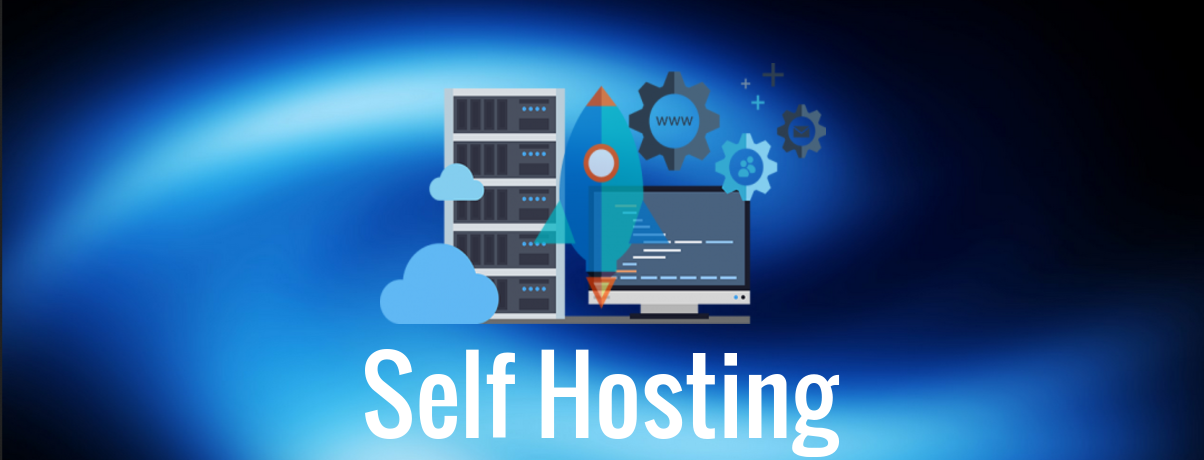
Setting up a self-hosted website can seem daunting at first, but it’s a rewarding experience that gives you complete control over your online presence. This guide will walk you through the process, from choosing a hosting platform to configuring your server and securing your website.
Choosing a hosting platform.
The first step is to choose a hosting platform that suits your needs. Popular options include:
- Shared Hosting: This is the most affordable option, where you share server resources with other websites. It’s suitable for basic websites with low traffic.
- VPS (Virtual Private Server): This provides more resources and control compared to shared hosting. It’s a good choice for websites with moderate traffic and specific software requirements.
- Dedicated Server: This offers the highest level of control and resources, as you have an entire server dedicated to your website. It’s ideal for high-traffic websites and demanding applications.
- Cloud Hosting: This uses a network of servers to distribute your website’s resources. It offers scalability, reliability, and flexibility.
Installing necessary software.
Once you’ve chosen a hosting platform, you need to install the necessary software. This typically involves:
- Web Server: This software handles requests from users’ browsers and delivers the website’s content. Popular options include Apache and Nginx.
- Database: This stores your website’s data, such as user information, posts, and comments. MySQL and PostgreSQL are common choices.
- Content Management System (CMS): This provides a user-friendly interface for creating and managing your website’s content. Popular CMS platforms include WordPress, Joomla, and Drupal.
Configuring the server.
After installing the necessary software, you need to configure your server. This involves:
- Setting up domain name: You need to register a domain name for your website and point it to your server’s IP address.
- Creating a database: You need to create a database for your website and configure its permissions.
- Installing and configuring the CMS: You need to install your chosen CMS and configure it to connect to the database and web server.
Securing the website., Self hosted website
Security is crucial for any website. Here are some tips to secure your self-hosted website:
- Use strong passwords: Use a combination of uppercase and lowercase letters, numbers, and symbols for all your passwords.
- Enable two-factor authentication: This adds an extra layer of security by requiring you to enter a code from your phone or email in addition to your password.
- Keep software updated: Regularly update your CMS, web server, and database software to patch security vulnerabilities.
- Install security plugins: There are many security plugins available for popular CMS platforms that can help protect your website from malware and hacking attempts.
- Use an SSL certificate: This encrypts the communication between your website and users’ browsers, protecting sensitive information such as passwords and credit card details.
Ensuring website stability.
To ensure your website remains stable and reliable, you should:
- Regularly back up your website: This allows you to restore your website in case of data loss or a security breach.
- Monitor your website’s performance: Regularly check your website’s speed, uptime, and resource usage to identify any potential problems.
- Optimize your website’s code: This can improve your website’s performance and reduce the load on your server.
- Choose a reliable hosting provider: Choose a hosting provider with a good reputation for reliability and customer support.
Choosing a domain name and web hosting: Self Hosted Website

Once you’ve decided to self-host your website, the next step is to choose a domain name and a web hosting plan. These two elements are crucial for your website’s online presence and performance. A well-chosen domain name will be memorable and relevant to your website’s content, while a suitable web hosting plan will provide the necessary resources and infrastructure for your website to function smoothly.
Setting up a self-hosted website gives you complete control over your online space, allowing you to customize everything from design to functionality. If you’re looking for inspiration for a fun and creative project, check out these amazing mud kitchen ideas that will keep your little ones entertained for hours.
Once you’ve got your mud kitchen project underway, you can use your self-hosted website to showcase your creations and share your ideas with others.
Choosing a domain name
Your domain name is your website’s address on the internet. It’s what visitors type into their web browsers to access your site. Therefore, choosing a domain name is a critical decision.
- Keep it short and memorable: A shorter domain name is easier to remember and type. Avoid using hyphens or numbers, as they can make it harder for people to recall.
- Make it relevant to your website’s content: Choose a domain name that reflects the topic or theme of your website. This will help visitors understand what your website is about and make it easier for them to find you through search engines.
- Check for availability: Once you’ve come up with a few domain name ideas, check if they’re available. You can use domain registrars like GoDaddy, Namecheap, or Google Domains to search for available domain names.
- Consider different extensions: The most common domain extension is .com, but there are many other options available, such as .net, .org, and .info. Choose an extension that is relevant to your website’s content and target audience.
Web hosting options
Web hosting refers to the service that provides the necessary infrastructure for your website to be accessible online. There are several types of web hosting options available, each with its own advantages and disadvantages.
- Shared hosting: This is the most affordable option, where multiple websites share the same server resources. It’s suitable for small websites with low traffic.
- VPS (Virtual Private Server) hosting: VPS hosting provides a dedicated portion of a server’s resources, offering more control and performance than shared hosting. It’s suitable for websites with moderate traffic and specific resource requirements.
- Dedicated hosting: This is the most expensive option, where you have an entire server dedicated to your website. It provides the highest level of performance and security, ideal for high-traffic websites or websites with demanding applications.
Choosing the best hosting plan
The best hosting plan for your website depends on your specific needs and budget. Here are some factors to consider:
- Traffic volume: If you expect a lot of traffic, you’ll need a hosting plan with sufficient resources to handle the load.
- Website features: Some websites require specific features, such as databases, email accounts, or scripting languages. Make sure your hosting plan includes these features.
- Security: Security is crucial for any website, so choose a hosting provider that offers robust security features, such as firewalls, malware protection, and regular backups.
- Customer support: It’s essential to have reliable customer support available in case you encounter any issues with your website or hosting plan.
- Budget: Consider your budget and choose a hosting plan that offers the best value for your money.
Website development for self-hosting
Once you’ve secured a domain name and web hosting, the next step is to develop your website. This involves choosing a development approach and building the actual content of your site. There are two main approaches: using a Content Management System (CMS) or building a custom website.
Content Management Systems (CMS)
CMS platforms provide a user-friendly interface for creating and managing website content without needing extensive coding knowledge. They offer pre-built templates, plugins, and themes to customize the look and functionality of your website. Popular CMS platforms for self-hosting include:
- WordPress: The most widely used CMS, known for its flexibility, ease of use, and vast plugin ecosystem. It powers millions of websites, from personal blogs to large e-commerce stores.
- Drupal: A powerful and highly customizable CMS favored for complex websites with advanced features and security requirements. It’s often used for government websites, universities, and large organizations.
- Joomla: A feature-rich CMS with a focus on community building and content management. It’s suitable for websites with dynamic content, forums, and membership areas.
Advantages and Disadvantages of Using a CMS
Using a CMS has several advantages, including:
- Ease of use: CMS platforms are designed to be user-friendly, making it easy for beginners to create and manage their websites.
- Flexibility and customization: CMS platforms offer a wide range of themes, plugins, and extensions to customize your website’s appearance and functionality.
- Cost-effective: Many CMS platforms are open-source and free to use, reducing the initial development costs.
- Strong community support: Popular CMS platforms have large and active communities providing support, tutorials, and resources.
However, there are also some disadvantages to consider:
- Security concerns: CMS platforms are prone to security vulnerabilities, requiring regular updates and security measures.
- Limited customization: While CMS platforms offer customization options, they may not be as flexible as custom-built websites.
- Performance issues: Large and complex websites built on CMS platforms can experience performance issues, especially with heavy traffic.
Custom Website Development
Building a custom website involves coding from scratch using programming languages like HTML, CSS, and JavaScript. This approach provides complete control over the website’s design, functionality, and performance but requires technical expertise.
Advantages and Disadvantages of Custom Website Development
The main advantages of custom website development include:
- Complete control: You have complete control over every aspect of your website, from design to functionality.
- Enhanced performance: Custom websites can be optimized for performance and scalability, handling high traffic loads efficiently.
- Unique design: Custom websites allow for unique designs and functionalities that are not available with CMS platforms.
However, custom website development also has its drawbacks:
- High cost: Developing a custom website requires skilled developers and can be expensive.
- Time-consuming: Building a custom website takes time and effort, especially for complex projects.
- Technical expertise required: You need technical knowledge to manage and maintain a custom website.
Managing a self-hosted website
Owning a self-hosted website comes with the responsibility of ongoing management. This includes ensuring your website functions smoothly, stays secure, and remains updated. Let’s delve into the essential aspects of managing a self-hosted website.
Regular Website Maintenance and Security Updates
Regular maintenance is crucial for keeping your self-hosted website running smoothly and securely. It involves a series of tasks that should be performed periodically to prevent issues and ensure optimal performance.
- Update your website’s software: This includes updating the core WordPress software, themes, and plugins. Updates often include security patches that address vulnerabilities and improve performance. Regularly updating your website’s software helps prevent security breaches and ensures compatibility with the latest technologies.
- Back up your website data: Regularly backing up your website data is essential for disaster recovery. This includes backing up your database, files, and themes. In case of a data loss event, such as a server crash or accidental deletion, you can restore your website from a backup. Consider using a cloud-based backup service for added security and convenience.
- Monitor website performance: Monitor your website’s performance using tools like Google Analytics. This will help you identify any issues that may be affecting your website’s speed, availability, and user experience. For example, if you notice a significant drop in traffic or an increase in bounce rate, it might indicate a performance issue that needs to be addressed.
- Check for broken links: Broken links can negatively impact your website’s user experience and search engine optimization (). Use a tool like Broken Link Checker to identify and fix broken links on your website. Regularly checking for broken links ensures that your website content remains accessible and relevant to visitors.
- Optimize website images: Optimize your website images for faster loading times. Use tools like TinyPNG or Optimizilla to compress images without sacrificing quality. Optimizing images can significantly improve your website’s performance, especially on mobile devices.
- Clean up website files: Regularly clean up your website’s files to remove unnecessary files and folders. This helps improve website performance and reduces the risk of security vulnerabilities. You can use a file manager or an FTP client to access and clean up your website’s files.
- Scan for malware: Regularly scan your website for malware using tools like Sucuri or Wordfence. Malware can compromise your website’s security and affect your website’s performance. Regularly scanning your website for malware helps detect and remove any malicious code.
- Update your website’s security: Keep your website’s security up to date by installing security plugins and implementing security best practices. Use strong passwords, enable two-factor authentication, and regularly update your website’s security software.
Backups and Disaster Recovery
Creating regular backups of your website is crucial for protecting your data and ensuring your website’s continuity. This is especially important for self-hosted websites, where you are responsible for managing all aspects of your website’s infrastructure.
- Backup frequency: The frequency of backups depends on the rate of change on your website. For websites with frequent updates, consider daily or even hourly backups. For websites with less frequent updates, weekly or monthly backups might suffice.
- Backup types: There are several types of backups you can create. A full backup includes all website files and databases. An incremental backup only backs up changes made since the last full backup. A differential backup backs up all changes made since the last full backup, which is a good compromise between full and incremental backups.
- Backup storage: You can store your backups locally on your server, on a cloud storage service, or on an external hard drive. Consider using a cloud storage service for added security and redundancy. For example, if your server crashes, you can still access your backups from the cloud.
- Disaster recovery plan: A disaster recovery plan Artikels the steps you will take in case of a disaster. This plan should include details on how to restore your website from backups, how to contact your hosting provider, and how to communicate with your website visitors.
Security considerations for self-hosted websites
Self-hosting gives you complete control over your website, but it also comes with the responsibility of securing it. Failing to implement proper security measures can leave your website vulnerable to attacks, potentially leading to data breaches, financial losses, and damage to your reputation.
Common security threats and vulnerabilities
Understanding the common threats and vulnerabilities is crucial for implementing effective security measures. Here are some of the most prevalent risks associated with self-hosted websites:
- Malware infections: Malicious software can compromise your website’s functionality, steal sensitive data, or redirect users to harmful websites.
- Cross-site scripting (XSS) attacks: These attacks inject malicious scripts into your website, allowing attackers to steal user credentials or manipulate website content.
- SQL injection attacks: Hackers can exploit vulnerabilities in your website’s database to gain unauthorized access to sensitive information or modify data.
- Denial-of-service (DoS) attacks: These attacks overwhelm your website with traffic, making it inaccessible to legitimate users.
- Brute-force attacks: Attackers attempt to guess user passwords by trying multiple combinations until they succeed.
Using strong passwords, SSL certificates, and firewalls
Implementing robust security measures is essential to mitigate these risks.
- Strong passwords: Using strong passwords for all website logins is crucial. A strong password is at least 12 characters long, includes a mix of uppercase and lowercase letters, numbers, and symbols. Avoid using common words or phrases.
- SSL certificates: An SSL certificate encrypts communication between your website and users, protecting sensitive information like credit card details and login credentials. This ensures that data transmitted between the website and the user’s browser remains confidential and secure. The presence of an SSL certificate is indicated by the padlock icon in the browser’s address bar and the “https” protocol in the URL.
- Firewalls: A firewall acts as a barrier between your website and the internet, blocking unauthorized access and malicious traffic. Firewalls can be implemented at the network level, server level, or even within your website’s software.
Best practices for protecting website data and user privacy
Beyond these fundamental security measures, adopting best practices for data protection and user privacy is crucial.
- Regularly update software and plugins: Software updates often include security patches that fix vulnerabilities. It’s crucial to keep your website’s software, including the operating system, web server, and plugins, up-to-date to protect against known vulnerabilities.
- Implement two-factor authentication: Two-factor authentication adds an extra layer of security by requiring users to provide two forms of authentication, such as a password and a code sent to their phone.
- Limit user access: Only grant users the minimum level of access necessary to perform their tasks. This principle of least privilege reduces the potential damage if an account is compromised.
- Use a secure web hosting provider: Choose a web hosting provider with a proven track record of security and reliability. Look for providers that offer features like regular security audits, backups, and intrusion detection systems.
- Regularly back up your website data: Regular backups allow you to restore your website in case of a security breach or data loss.
- Monitor your website for suspicious activity: Be vigilant in monitoring your website for unusual traffic patterns, error messages, or unauthorized access attempts. Set up alerts to notify you of suspicious activity.
Troubleshooting common issues with self-hosted websites
Self-hosting gives you complete control over your website, but it also comes with the responsibility of troubleshooting any problems that arise. From website downtime to slow loading speeds, there are a variety of issues you might encounter. This section will guide you through common problems and provide solutions to get your website back up and running smoothly.
Website Downtime
Website downtime can be a major headache for any website owner, especially if it disrupts your business or personal projects. There are several reasons why your website might be down, and understanding the cause is crucial for finding a solution.
Here are some common causes of website downtime and their solutions:
- Server Issues: A malfunctioning server is a common culprit for website downtime. Your hosting provider might be experiencing technical difficulties or your server might require a reboot. Contact your hosting provider for assistance and check their status page for any known outages.
- Database Problems: A corrupted or overloaded database can prevent your website from loading. Ensure your database is properly configured and has sufficient resources. You can also try restoring a backup of your database to recover from data corruption.
- Network Connectivity: If your website is hosted on a remote server, network connectivity issues can cause downtime. Check your internet connection and contact your internet service provider if there are any outages.
- Website Code Errors: Errors in your website’s code, such as syntax errors or missing files, can prevent your website from loading properly. Use your website’s error logs to identify any issues and fix them accordingly.
Slow Loading Times
A slow-loading website can negatively impact user experience and even hurt your search engine ranking. Several factors can contribute to slow loading times, and addressing them is essential for improving website performance.
- Large File Sizes: Images, videos, and other media files can significantly slow down your website if they are too large. Optimize these files for the web by compressing them without sacrificing quality.
- Inefficient Code: Poorly written or bloated code can impact website loading speed. Use a code minifier to remove unnecessary characters and optimize your code for better performance.
- External Scripts and Plugins: Third-party scripts and plugins can also contribute to slow loading times. Minimize the number of external resources you use and choose lightweight and efficient options.
- Server Performance: A slow server can impact your website’s loading speed. Ensure your hosting plan provides sufficient resources for your website and consider upgrading if necessary.
Security Breaches
Security breaches are a serious concern for self-hosted websites, as they can lead to data loss, financial damage, and reputational harm. Protecting your website from security threats is crucial.
- Weak Passwords: Using weak or easily guessed passwords can make your website vulnerable to attacks. Use strong and unique passwords for all your website accounts and enable two-factor authentication for enhanced security.
- Outdated Software: Outdated software can contain security vulnerabilities that hackers can exploit. Keep your website software, plugins, and themes up to date with the latest security patches.
- Malware Infections: Malware can infect your website and compromise its security. Install a security plugin to scan for malware and protect your website from malicious attacks.
- DDoS Attacks: Distributed Denial of Service (DDoS) attacks can overwhelm your server with traffic, making your website unavailable. Use a DDoS protection service to mitigate these attacks and ensure your website remains online.
Website Performance Monitoring
Regularly monitoring your website’s performance is essential for identifying potential issues before they become major problems. There are various tools available for monitoring website performance and providing insights into its health.
- Website Speed Testing Tools: Use website speed testing tools like Google PageSpeed Insights or Pingdom to measure your website’s loading speed and identify areas for improvement.
- Website Uptime Monitoring Services: Uptime monitoring services like UptimeRobot or Pingdom can track your website’s availability and notify you if it goes down.
- Server Monitoring Tools: Server monitoring tools can provide detailed information about your server’s performance, including CPU usage, memory usage, and disk space.
- Security Scanning Tools: Use security scanning tools like Sucuri or Wordfence to regularly scan your website for vulnerabilities and malware.
Resources for Troubleshooting and Technical Support
When you encounter problems with your self-hosted website, you have several resources at your disposal for troubleshooting and seeking technical support.
- Website Documentation: Most website software and plugins provide detailed documentation with troubleshooting guides and FAQs. Consult the documentation for your specific platform for answers to common problems.
- Online Forums and Communities: Online forums and communities dedicated to website development and hosting offer a wealth of knowledge and support from fellow users. Search for forums related to your specific platform or hosting provider for assistance.
- Hosting Provider Support: Your hosting provider offers technical support to help you troubleshoot issues related to your server and hosting environment. Contact their support team for assistance with server configuration, performance optimization, or security concerns.
- Freelance Developers and Consultants: If you need specialized assistance or prefer to outsource troubleshooting, consider hiring a freelance developer or consultant with expertise in your specific website platform.
The future of self-hosting
The landscape of self-hosting is constantly evolving, influenced by technological advancements and changing user preferences. While traditional self-hosting methods remain relevant, new technologies are reshaping how individuals and businesses approach website development and management.
The emergence of cloud computing and serverless architecture has significantly impacted self-hosting, offering new possibilities for flexibility, scalability, and cost-effectiveness.
The impact of cloud computing and serverless architecture on self-hosting
Cloud computing platforms like Amazon Web Services (AWS), Google Cloud Platform (GCP), and Microsoft Azure provide a virtualized infrastructure that eliminates the need for physical servers. This allows users to access computing resources on demand, paying only for what they use. Serverless architecture further simplifies this process by enabling developers to run code without managing servers or infrastructure. This eliminates the complexities of server maintenance, allowing developers to focus on building applications.
- Scalability and Flexibility: Cloud platforms offer scalability, allowing websites to handle fluctuating traffic volumes without requiring manual adjustments. Serverless architectures further enhance this flexibility by automatically scaling resources based on demand.
- Cost-effectiveness: Pay-as-you-go pricing models make cloud computing cost-effective, particularly for websites with fluctuating traffic or resource requirements. Serverless architectures further reduce costs by eliminating the need to pay for idle resources.
- Simplified Management: Cloud platforms and serverless architectures abstract away the complexities of server management, freeing developers to focus on building applications. This simplifies the process of setting up and managing self-hosted websites.
Predictions about the future of self-hosting
The future of self-hosting is likely to be characterized by increased adoption of cloud computing and serverless architectures. These technologies offer numerous benefits, including scalability, cost-effectiveness, and simplified management, making them attractive options for individuals and businesses.
- Increased adoption of cloud platforms: Cloud computing is expected to continue gaining popularity, with more individuals and businesses opting for cloud-based solutions for their website hosting needs. This trend will be driven by the numerous benefits offered by cloud platforms, such as scalability, cost-effectiveness, and simplified management.
- Growth of serverless architectures: Serverless architectures are expected to gain traction in the self-hosting space, further simplifying website development and management. This trend will be fueled by the increasing demand for faster development cycles and reduced infrastructure management overhead.
- Rise of hybrid hosting models: Hybrid hosting models that combine traditional self-hosting with cloud-based services are likely to emerge. This approach will allow users to leverage the benefits of both traditional self-hosting and cloud computing, creating a more flexible and cost-effective hosting solution.
Epilogue
Self-hosting is a powerful and rewarding path for those seeking complete control over their online presence. It allows you to push the boundaries of creativity, implement unique features, and build a website that truly reflects your vision. However, it’s crucial to remember that self-hosting comes with responsibilities. You’ll need to manage updates, maintain security, and ensure your website’s stability. By embracing these challenges, you’ll gain invaluable experience in web development, server administration, and the art of building a truly personalized online home.

